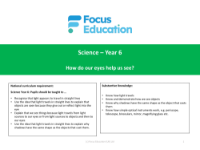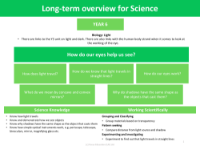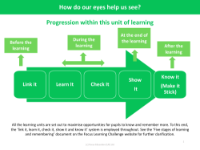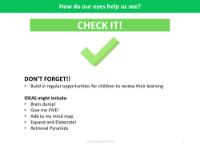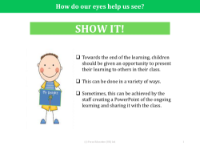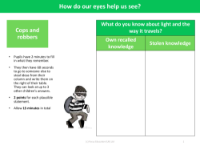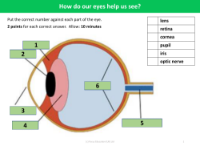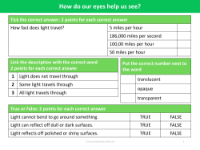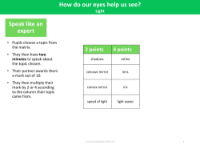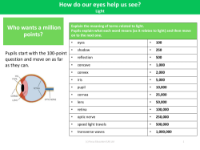Knowledge organiser - Light - Year 6
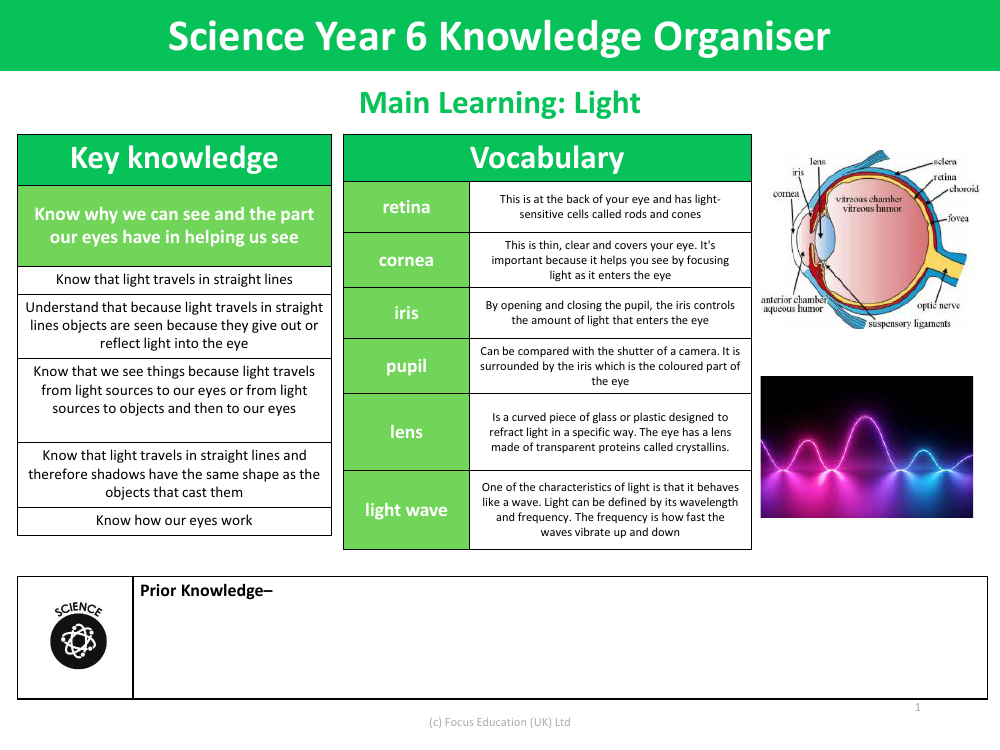
Science Resource Description
The Year 6 knowledge organiser for the topic of light encompasses essential vocabulary and key knowledge that students are expected to learn. It introduces the retina as the part of the eye located at the back, containing light-sensitive cells known as rods and cones that are crucial for vision. The cornea, a thin, clear layer that covers the eye, is highlighted for its role in focusing light as it enters the eye, aiding in sight. The iris is described as the component that regulates the amount of light entering the eye by adjusting the size of the pupil, much like the aperture of a camera. The pupil itself is likened to a camera's shutter, surrounded by the iris, the coloured part of the eye.
The lens of the eye is another vital part of the visual system, a curved structure made of transparent proteins called crystallins, designed to refract light in a specific manner. Additionally, light waves are explained as behaving both like waves, with properties defined by their wavelength and frequency – the rate at which the waves oscillate. As for the key knowledge, students are expected to understand the process of vision, including the role of the eyes in seeing and the fundamental principle that light travels in straight lines. They learn that visibility is due to the emission or reflection of light into the eye and that objects are visible because light travels from sources to our eyes directly or via objects. Furthermore, the concept of shadows is linked to the straight-line propagation of light, resulting in shadows that mimic the shape of the objects casting them. This knowledge organiser sets the foundation for the main learning about light and builds upon prior knowledge that students have acquired.
